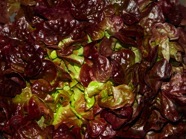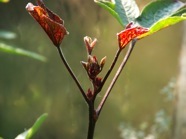
K-Le
KENAF
Kenaf (Hibiscus cannabinus) is a hard one to grow over here, it needs (as most hibiscus) lots of warmth and sun. I always get plants about 40 cm high, sometimes a few (wonderful) flowers, and after that they get all sorts of nasty diseases (botrytis,...) related to humidity. The leaves, especially the young ones , are eaten and have a nice tender taste. Oil can be pressed out of the seeds, but I never grew out one single seed....Obviously something for tropical or subtropical regions.
LAMB’S QUARTERS
Again something from the chenopdiaceae family (Chenopodium giganteum), and something that you won’t pass by just like that. They grow out big, 3 metres is no exception, with a wonderful magenta colour (this is the most common one, there are some other ones, but I’ve never tried these). The leaves are the edible part of the plants, making a nice tender spinach or they can be added to other dishes. It’s a bit too easy to grow, it resows abundantly and could become invasive. But the plants are soo pretty and nice-tasting...
Seeds are ground and used as a flour in all sorts of breads and other things.
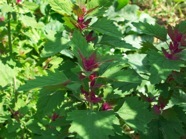
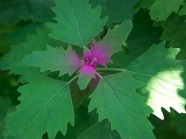
LAND CRESS
This is comparable to water cress, the young shoots and seedlings are eaten, they are very hardy and can even be harvested during mild winters. the taste is just like the already mentioned water cress, a bit sharp . They are mostly eaten raw, when you cook the greens they lose a bit of their sharpness. And remember, this is a member of the brassica family, so take care of your garden rotation.
LATHYRUS TUBEROSUS
This was eaten a lot during the middle-ages, especially in the Netherlands. Once, whole fields of this were grown over there, more specifically in the province of Zeeland. This is a very nice vegetable, and very ornamental as well. The edible parts are the thickened roots and the flowers. The tubers have a very agreable chestnut taste, some sweet hints included. Unfortunately production is a bit low...
If you try to grow them from seeds, have some patience, they take ages to germinate (if you can obtain one of the tubers, you’re better of, it goes faster). The plants seem to be flowering forever, from spring to autumn.
I placed this under the latin name, because I was really unsure what name to use otherwise (earth chestnut, tuberous vetch and others...)
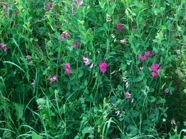


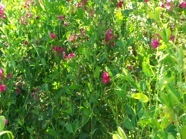
LEEK
What can we say about this one? It’s definitely one of the most popular vegetables in Belgium, being quite easy to overwinter and giving big harvests of tender tasting leeks. Sadly , many open-pollinated leeks (allium porrum) are being replaced by hybrid varieties, who do NOT have better taste, they only have straighter shanks and /or larger plants (but some open-pollinated ones have this as well). Give leek a good deal of nutritients, and plant them out early enough, take care to avoid insects like leek moth who can do a lot of damage, and you will be rewarded with a nice harvest. There are many varieities, including a green-yellow coloured one, used mainly for autumn harvest.
Something that should fit in with the ‘other alliums’ is ‘oerprei’, because it’s allium ampeloprasum. This was once grown for the edible small onion-like bulbils, who were pickled, but its use has changed a bit, its mostly used as some sort of leek, the leaves are cut during spring and prepared as ‘common’ leek. It’s even sweeter tasting than leek, and mostly replanted in August, when the plants have died and the bulbils can be planted out. Sowing is also possible and quite easy.
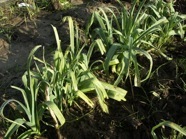

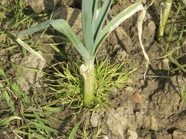
LEMON GRASS
Lemon grass is a word that’s used over here for different species of the cymbopogon family, especially cymbopogon flexuosis and cymbopogon citratus (the last one is the ‘true’ lemongrass). Although it’s a tropical or subtropical plant, it’s quite simple to grow and it stands low temperatures during wintertime (but take care to keep it frost-free!). Lemon grass can either be sown (easy) or you could buy a good-looking piece of lemon grass in an Asian shop, these root up quickly when they are placed warm and humid. All you have to do to keep it growing is providing a bit of water, sun and nutritients....
Uses are multiple, take the leaves for a nice tea, or use the young side shoots for preparing hot dishes, they taste excellent in combination with bananas or rice!
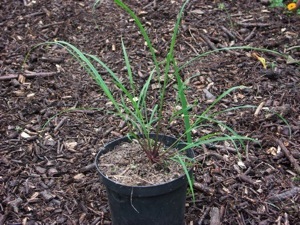
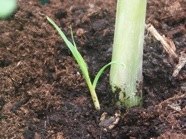
LEMON VERBENA
This is the one of the best tea plants I know, giving a really refreshingly good cup of tea. Unfortunately the plants are really adapted to a warmer climate than ours. But it can work outside, provided you give it a nice sunny spot and even more important is a nearly frost-free place during wintertime. I just leave the plant in the ground, and cover the thing with a load of hay or straw, whenever first frosts threaten to arrive. They seem to be unfussy about soil quality, and can grow huge in ideal climates, I’ve seen them reach up to three metres (mine barely reach one metre in a good summer...).
Of course lemon verbena (Aloysia triphylla) can easily be grown in pots, and moved inside during winter.

LENTIL
Probably one of the oldest domesticated plants, lentil is a bit a forgotten vegetable nowadays. Many forms have been created during that time, big lentils are the ones that are left, the small ones are only seldom grown out. Lentils (lens culinaris) are very nourishing, we only know the use of the fully grown out flat seeds, but seed pods can be eaten as well, comparable to beans. Lentils give me a bit of problem to grow them out properly, first of all, they want lots of sun, and second, they prefer a sandy soil (and I have a fairly heavy loam soil...) and good drainage. Crops aren’t high, but they’re nice little plants with very nutricious seeds.
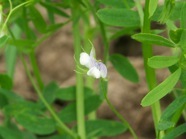
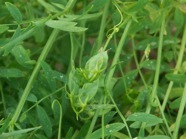
LETTUCE
Probably one of the best-known vegetables in the world, lettuce (lactuca sativa) is grown nearly all year-round in Belgium. Some varieties are quite hardy (although these tend to have some sturdier leaves). The range of varieties is enormous, try and grow out some iceberg lettuce or other good-tasting ones.
Give lettuce a good deal of nutritients, and a steady humidity and you will be rewarded. Some varieties are especially bred for cutting some leaves and they resprout readily.

